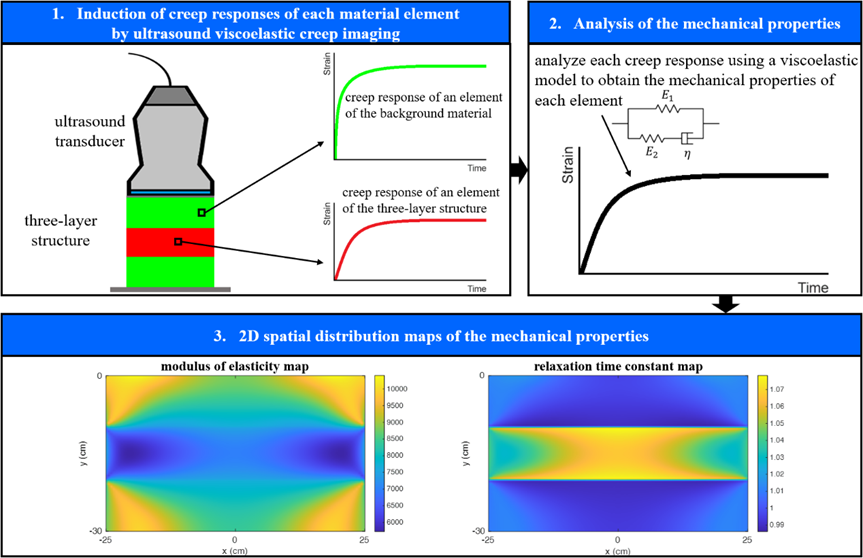Ultrasound viscoelastic creep imaging is an ultrasound imaging technique capable of quantitatively evaluating the internal spatial distribution of the viscoelastic properties of materials. The purpose of this study is to use finite element computational simulation to investigate the accuracy of ultrasound viscoelastic creep imaging (abbreviated as viscoelastography hereafter) for evaluating the viscoelastic properties of a viscoelastic heterogeneous three-layer structure, in order to further justify the value of viscoelastography for biomedical and clinical applications. The most important finding is that, although viscoelastography can accurately evaluate the viscoelastic properties of a homogeneous viscoelastic material, it in general cannot accurately evaluate the viscoelastic properties of each layer of a heterogeneous viscoelastic three-layer structure with large errors. Inaccuracy of the evaluation is due to deviation or distortion of the creep curve of each material point within the viscoelastic three-layer structure, resulting from the interaction between complicated viscoelastic behaviors of each layer within the viscoelastic three-layer structure. Even though this finding is based on a viscoelastic three-layer structure with specifically designed dimensions and properties, this finding provides important clues that how complicated the viscoelastic behaviors within a viscoelastic three-layer structure can be, and how these complicated viscoelastic behaviors can influence the measurement accuracy of a measurement technique in which the measurement is based on using a viscoelastic mathematical model to curvefit the measured viscoelastic behaviors. Biological tissues and engineered biomaterials are often multi-layer structures, and their structures and mechanical behaviors are much more complicated than those of the viscoelastic three-layer structure investigated in this study. Hence, based on the finding of this study, it could be reasonable to infer that it could be more challenging to apply viscoelastography to accurately evaluate the viscoelastic properties of a heterogeneous multi-layer biological tissue or engineered biomaterial, although it would be useful to apply to materials that can be properly assumed to be homogeneous such as liver or hydrogel. (應力所林哲宇教授提供)

Illustration of the working principle and measurement results of ultrasound viscoelastic creep imaging